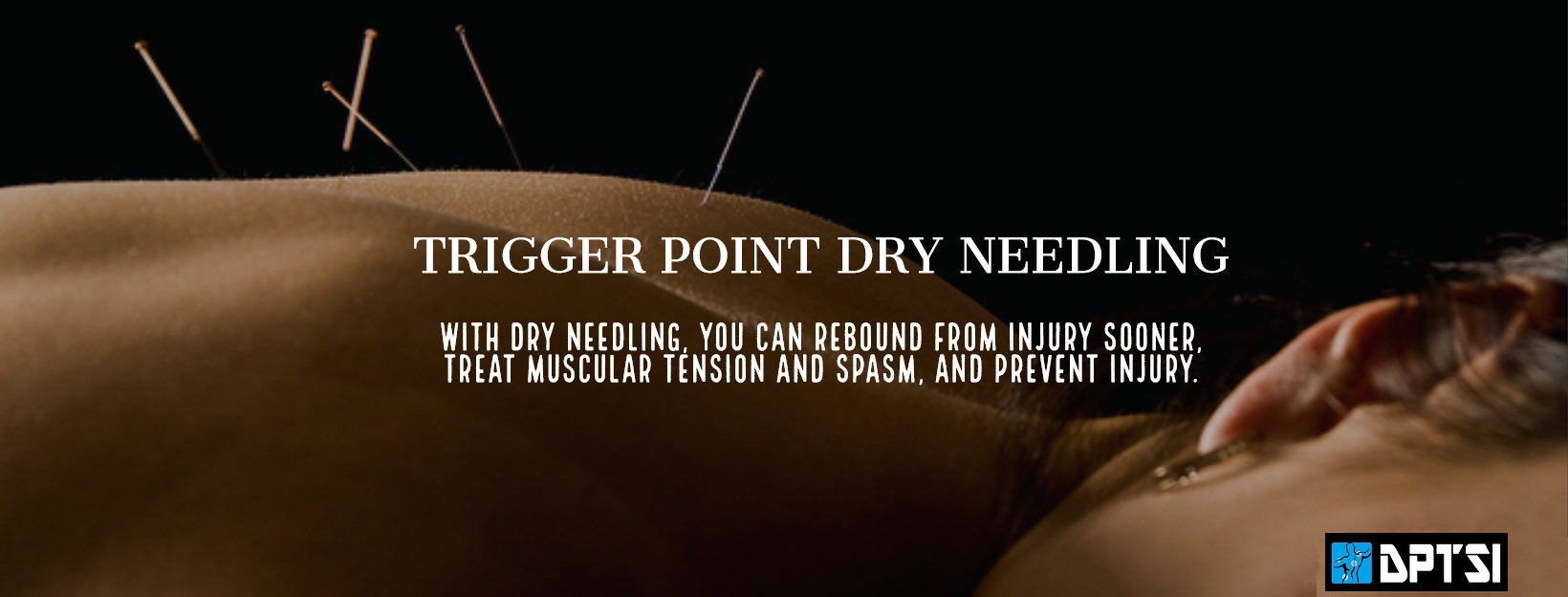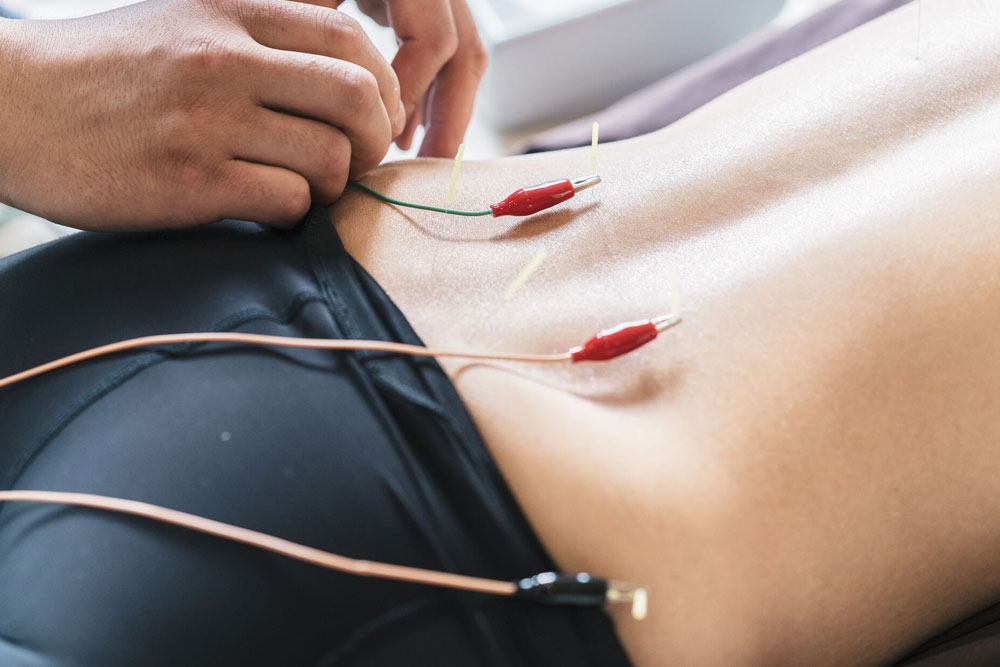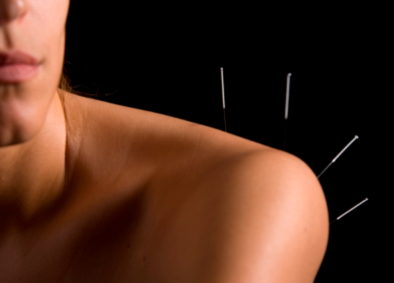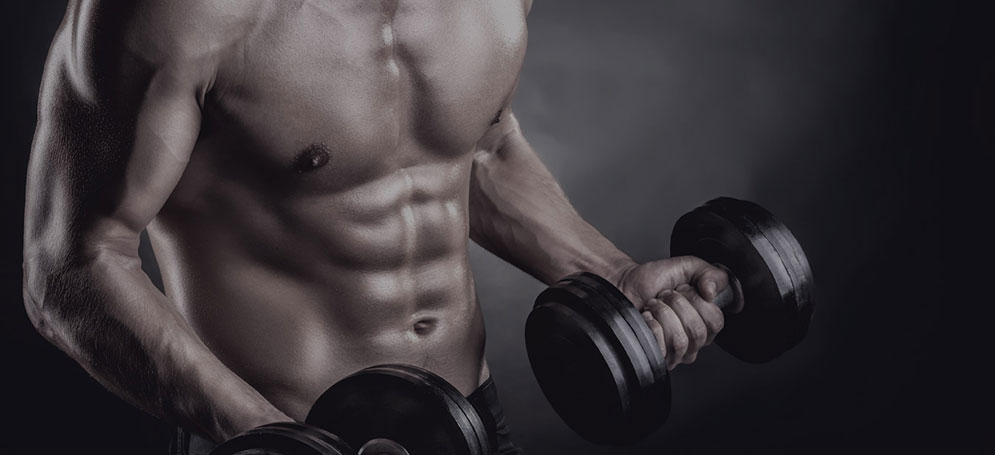
Trigger Point Dry Needling (TDN)

The American Physical Therapy Association defines dry needling as "a skilled intervention that uses a thin filiform needle to penetrate the skin and stimulate underlying myofascial trigger points, muscular, and connective tissues for the management of neuromusculoskeletal pain and movement impairments."
What is Trigger Point Dry Needling (TDN)?
TDN is the use of solid filament needles inserted through the skin and into the muscle to release painful myofascial trigger points. Dry needling results in the deepest tissue release allowing for improvements in movement and pain. It is called “Dry” Needling because there is no solution injected as with a hypodermic needle during a flu shot. With Dry Needling, the needle itself and the effects it produces within the tissue is the treatment.
When an injury occurs from repetitive use or acute trauma, inflammation will be produced from the damaged tissues. The damaged tissues will also go into a protective tension state or contracture to guard against further damage from utilizing the injured tissue. This contracture and inflammation inhibit microcirculation which limits both the oxygen rich blood reaching the injury and the waste products leaving the injury. The injury site becomes hypoxic (decreased in oxygen) which stimulates the body to produce fibroblasts, a cell that produces fibrosis or scar tissue. This fibrosis and scarring builds up around the muscles and tissues limiting the tissues ability to fully function (lengthen/shorten) and can also cause compression and irritation of nerves (such as carpal tunnel syndrome) – all of which inevitably lead to biomechanical disturbances in gait and function.
TDN uses a small, solid filament needle which is inserted in a contracted painful knotted muscle which may create a local twitch reflex that is both diagnostic and therapeutic as it is the first step in breaking the pain cycle as research shows will decrease muscle contraction, reduce chemical irritation, improve flexibility and decrease pain. When a needle is inserted into muscle it will also produce a controlled lesion and will cut between three to fifteen thousand individual muscle fibers. The body considers the needle as a foreign invader and will activate the immune system as a response. The cut muscle fibers also produce an inflammatory reaction that your body will respond to not just locally but all over the body to reduce inflammation systemically.
Is Trigger Point Dry Needling Acupuncture?
No, Trigger Point Dry Needling is based on Western medical research and principles, whereas acupuncture is based on Traditional Chinese Medicine. The main similarity is that the same sterile, disposable solid filament needles are used.
When an injury occurs, the damaged tissue become inflamed. One of the functions of inflammation is to protect against further damage to the area, and part of this process involves the muscle contracting and tightening. This is a good thing because the muscle is trying to heal itself, but inflammation limits the amount of good blood flow reaching the area. Part of dry needling is looking to hit "trigger points" within the muscle, facilitating a release of tension, which promotes healing.
"Dry needling creates good blood flow," says Andre Acuña, an Edinburg, Texas-based licensed physical therapist and owner of Doctor's Physical Therapy & Sports Institute. "With an injury, there's inflammation. It's a good thing, because that's the body trying to heal. But you've also got trash dumped in there, things like old blood and waste products. Dry needling promotes new blood flow to get that bad stuff out and bring in more good stuff [i.e., oxygen-rich blood]."
This might seem similar to acupuncture, but dry needling is based on western medicine, whereas acupuncture is based on eastern medicine and philosophy. Acupuncture centers around the flow of energy through meridians in the body. Dry needling is based on modern western physiological and anatomical knowledge. Also, dry needling probes significantly deeper into the muscle than traditional acupuncture. Skelton practices what's known as integrative dry needling, as do many physical therapists.

Does TDN hurt?
You may or may not feel the insertion of the needle. The specific needle manipulation is intended to produce a local twitch response that can elicit a very brief (less than a second) painful response some patients describe as a deep ache or cramping sensation. Again, the therapeutic response occurs with the elicitation of the local twitch response and is a desirable reaction.
What can I do to prepare for my therapy?
Eat a light meal 1-2 hours prior to your visit and wear loose, comfortable clothing that can be rolled up or down to access your areas of concern with the greatest ease.
What can I expect after treatment?
We are looking to get improvements even from the first visit such as increased range of motion, ease of movement and decreased signs/symptoms.
Many patients report being sore after the treatment in both the area treated and the area of referred symptoms. Typically this soreness lasts between a few hours and two days and there is occasional bruising. Soreness may be alleviated by applying heat to the area and performing specific light stretches for the treated muscle.

What Types of Conditions Can TDN Assist?




